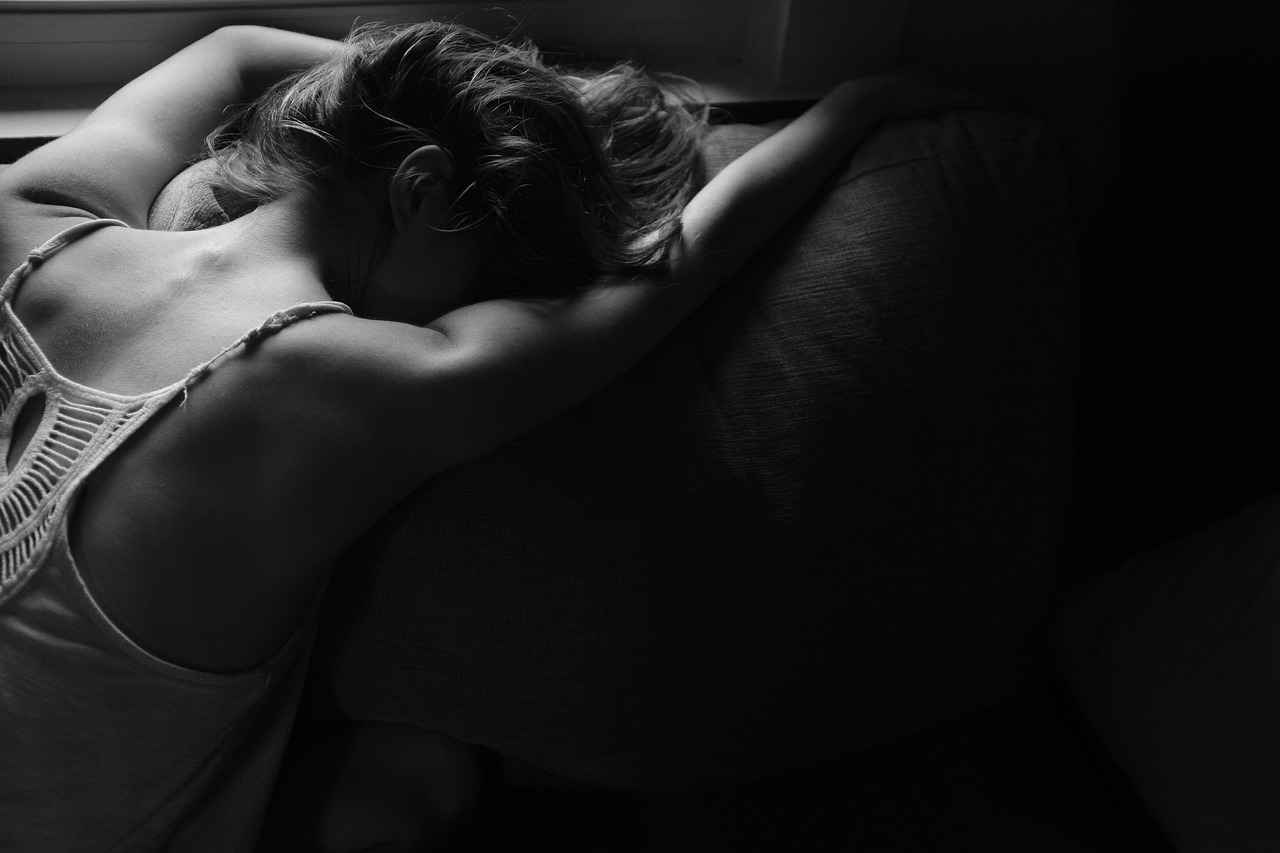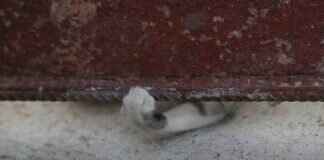Explore the latest trends in carved bed designs that elevate bedroom aesthetics, combining luxury with craftsmanship. This article delves into styles, materials, and tips for creating a stunning focal point in your bedroom.
Understanding Carved Bed Designs
Carved beds are a remarkable blend of artistry and functionality. Defined by their intricate designs and skilled craftsmanship, these beds serve as both practical furniture and stunning decor pieces. The variety of styles available today offers something for every taste, from classic to contemporary.
Popular Styles of Carved Beds
- Traditional Carved Beds: These beds often feature elaborate carvings and rich woods, reflecting a timeless elegance. They are perfect for those who appreciate classic interior design.
- Victorian Carved Beds: Known for their ornate details, Victorian beds are characterized by intricate patterns and a sense of grandeur. They make a statement in any bedroom, embodying the opulence of the era.
- Baroque Influences in Carved Beds: Baroque designs are all about drama and excess. Modern interpretations of these styles incorporate bold carvings and luxurious finishes, adding a touch of sophistication to contemporary spaces.
- Modern Carved Bed Trends: Minimalism is key in modern design, yet carved beds still offer elegance. Current trends focus on clean lines and subtle carvings that enhance rather than overwhelm a room.
- Rustic Carved Bed Designs: Emphasizing natural materials and simplicity, rustic beds bring warmth and charm, creating inviting atmospheres in bedrooms.
Materials Used in Carved Bed Designs
The choice of materials plays a crucial role in the aesthetics and longevity of carved beds. Here are some popular materials:
- Wooden Carved Beds: Wood remains the most favored material, offering durability and beauty. Different types of wood, such as oak, mahogany, and walnut, provide unique grains and finishes that enhance the overall design.
- Metal and Mixed-Material Carvings: Incorporating metal accents can add a modern twist to traditional designs. The combination of wood and metal creates a striking contrast, appealing to those who prefer an eclectic style.
Choosing the Right Carved Bed for Your Space
Selecting the perfect carved bed involves careful consideration of your bedroom’s dimensions and overall decor. Here are some practical tips:
- Size Considerations for Carved Beds: Measure your space to ensure the bed fits comfortably without overwhelming the room. Consider the height and width to maintain a balanced look.
- Matching Carved Beds with Bedroom Décor: Your carved bed should harmonize with your existing decor. Pay attention to color schemes and styles to create a cohesive aesthetic that reflects your personal taste.
In conclusion, carved beds are more than just furniture; they are a statement of style and craftsmanship. By understanding the various styles and materials available, as well as how to choose the right piece for your space, you can create a luxurious and inviting bedroom environment.

Understanding Carved Bed Designs
Carved beds are a stunning blend of artistry and functionality. These unique pieces of furniture not only serve as a place for rest but also act as a central focal point in any bedroom. The intricate designs and detailed craftsmanship involved in creating carved beds elevate them beyond mere utility, making them an essential element of luxurious interior design.
At their core, carved beds are defined by their ornate detailing and the materials used in their construction. Traditionally crafted from wood, these beds showcase a variety of styles that reflect cultural influences and historical periods. From the ornate carvings of the Victorian era to the sleek lines of modern designs, the options available today cater to diverse tastes and preferences.
One of the most appealing aspects of carved beds is their versatility. They can fit seamlessly into different bedroom aesthetics, whether you prefer a traditional look or a more contemporary vibe. The styles available range from rustic and farmhouse-inspired to elegant and sophisticated, ensuring that there is a carved bed to suit every individual’s taste.
- Traditional Carved Beds: Often characterized by intricate designs and rich materials, traditional carved beds bring a sense of history and grandeur to a bedroom.
- Modern Carved Beds: These designs focus on minimalism while retaining elegance, featuring clean lines and simple carvings.
- Rustic Carved Beds: Made from natural materials, rustic designs create a warm and inviting atmosphere, often incorporating elements like reclaimed wood.
When discussing carved bed designs, materials play a crucial role in both aesthetics and durability. The most common material used is wood, with various types offering different benefits:
- Hardwoods: Such as oak, maple, and cherry, are known for their durability and rich grain patterns.
- Softwoods: Like pine or cedar, are lighter and often more affordable, making them popular choices for rustic designs.
- Mixed Materials: Incorporating metals or upholstery can create unique visual appeal and modern touches.
Choosing the right carved bed for your space involves careful consideration of size and style. It is essential to measure your bedroom to ensure that the bed fits comfortably without overwhelming the space. Additionally, the carved bed should complement your existing décor. Harmonizing styles and colors can create a cohesive look that enhances the overall ambiance of your bedroom.
In summary, carved beds are more than just furniture; they are a statement of style and craftsmanship. Understanding the various designs, materials, and considerations for selection can help you find the perfect carved bed that not only meets your functional needs but also enhances your bedroom’s aesthetic appeal.

Popular Styles of Carved Beds
Carved beds have long been a centerpiece of bedroom design, offering a unique blend of artistry and functionality. With a myriad of styles available, it’s essential to understand the various options to find the perfect match for your home. This section explores the most popular styles of carved beds, ranging from traditional to contemporary, ensuring you can make an informed decision that aligns with your aesthetic preferences.
- Traditional Carved Beds: Traditional carved beds are characterized by their intricate designs and use of rich materials. Often made from solid wood, these beds feature elaborate carvings that reflect historical craftsmanship. Common motifs include floral patterns and ornate details, making them ideal for those who appreciate classic elegance.
- Victorian Carved Beds: A subset of traditional designs, Victorian carved beds are known for their grandiose appearance and ornate detailing. These beds often incorporate elements like high headboards and footboards, adorned with intricate carvings that evoke a sense of luxury and sophistication. The use of dark woods enhances the opulence, creating a stunning focal point in any bedroom.
- Baroque Influences in Carved Beds: Baroque design is synonymous with drama and opulence. Carved beds inspired by this style often feature bold, sweeping curves and lavish embellishments. The use of gold leaf and rich fabrics can further accentuate the grandeur, making these beds suitable for those who desire a statement piece in their decor.
- Modern Carved Bed Trends: In contrast to traditional styles, modern carved beds focus on minimalism while retaining elegance. These designs typically emphasize clean lines and subtle carvings, allowing the beauty of the wood to shine through. They are perfect for contemporary spaces, merging functionality with a sleek aesthetic.
- Rustic Carved Bed Designs: Rustic carved beds are perfect for those who appreciate natural materials and a cozy atmosphere. These beds often feature simple, understated carvings that highlight the wood’s natural grain and imperfections. The use of reclaimed wood can add character and warmth, making these beds ideal for a cabin or farmhouse-style bedroom.
Understanding these various styles not only enhances your knowledge but also helps you envision how each type can fit into your home. When selecting a carved bed, consider the overall theme of your bedroom and how the bed’s style complements your existing decor.
As you explore these options, think about the materials used in each design, as they play a crucial role in the bed’s durability and aesthetic appeal. From the rich grains of hardwood to the sleek finish of modern materials, the choice you make will significantly impact the overall ambiance of your bedroom.
Ultimately, the right carved bed can transform your sleeping space into a luxurious retreat, reflecting your personal style while providing comfort and functionality.
Traditional Carved Beds
Traditional carved beds are more than just furniture; they are timeless pieces of art that bring a touch of elegance and sophistication to any bedroom. These beds often feature intricate designs that showcase the craftsmanship and artistry of skilled artisans. The significance of traditional carved beds in interior design lies not only in their aesthetic appeal but also in their ability to create a warm and inviting atmosphere.
One of the defining characteristics of traditional carved beds is the use of rich materials, such as hardwoods like oak, mahogany, and cherry. These materials are not only durable but also provide a warm, natural finish that enhances the overall look of the bed. The carvings themselves can range from simple patterns to elaborate motifs inspired by nature, mythology, or cultural heritage. This intricacy in design often tells a story, making each piece unique.
In the realm of interior design, traditional carved beds serve as focal points in the bedroom. Their bold presence can anchor the space, allowing for a harmonious blend with other decorative elements. For instance, pairing a carved bed with soft linens and muted colors can create a serene environment, while contrasting it with vibrant hues and textures can produce a more dynamic aesthetic. This versatility makes traditional carved beds suitable for various design styles, from rustic to modern.
Moreover, traditional carved beds often reflect the cultural heritage of their origin. For example, Victorian carved beds are known for their ornate details and grandeur, often featuring elaborate headboards and footboards. On the other hand, Asian-inspired designs may incorporate motifs that symbolize peace and prosperity, showcasing the cultural significance embedded in their craftsmanship.
When considering a traditional carved bed, it is essential to think about the overall theme of your bedroom. A bed with intricate carvings can stand out beautifully in a minimalist space, while in a more eclectic room, it can serve as a conversation starter. Additionally, the choice of bedding and accessories should complement the bed’s design, enhancing its beauty without overwhelming the space.
In conclusion, traditional carved beds are a perfect blend of artistry and functionality, offering both aesthetic appeal and cultural significance. Their ability to adapt to various interior styles makes them a valuable investment for any homeowner looking to elevate their bedroom decor. Whether you prefer the ornate designs of the Victorian era or the simplicity of rustic styles, there is a carved bed that can fit seamlessly into your home.
Victorian Carved Beds
Victorian carved beds are a stunning representation of the opulence and artistry that characterized the Victorian era. Known for their ornate details and grand designs, these beds serve as captivating focal points in any bedroom. This section delves into the key characteristics that make Victorian beds not just furniture, but timeless pieces of art.
The hallmark of Victorian beds is their intricate carvings. Craftsmen of the time dedicated countless hours to create elaborate designs that often featured floral motifs, scrollwork, and figural details. These carvings are not merely decorative; they reflect the skill and artistry of the era, making each piece unique. The wood used, typically rich mahogany, oak, or walnut, adds to the luxurious feel and durability of the beds.
Another defining feature of Victorian carved beds is their grand scale. These beds were designed to make a statement, often featuring high headboards and footboards that command attention. The use of canopy designs was also popular, adding an element of drama and elegance to the bedroom space. Such features not only provide a sense of grandeur but also enhance the overall aesthetic of the room.
Victorian beds are often characterized by their rich upholstery. Fabrics such as velvet, brocade, and damask were commonly used to complement the intricate woodwork, creating a harmonious blend of texture and color. The combination of lavish fabrics with detailed carvings elevates the overall design, making the bed a true centerpiece of the bedroom.
In addition to their aesthetic appeal, Victorian carved beds offer a sense of historical significance. They represent a time when craftsmanship was highly valued, and furniture was made to last for generations. Owning a Victorian bed is not just about having a place to sleep; it’s about possessing a piece of history that can be passed down through the family.
When incorporating a Victorian carved bed into modern interiors, it’s essential to consider the overall design scheme. These beds can be paired with contemporary decor for a striking contrast or used in traditional settings for a more cohesive look. Accessories such as antique bedside tables or vintage lamps can enhance the Victorian charm and create a well-rounded aesthetic.
Overall, Victorian carved beds are more than just functional pieces; they are works of art that bring a sense of luxury and history into the home. Their intricate designs, rich materials, and timeless appeal make them a cherished addition to any bedroom, embodying the elegance of a bygone era.
Baroque Influences in Carved Beds
The Baroque period, spanning from the late 16th century to the early 18th century, is renowned for its grandiose art and architecture, characterized by drama, opulence, and intricate detailing. In modern interior design, these elements continue to inspire the creation of carved beds that serve as focal points in bedrooms, elevating aesthetics and evoking a sense of luxury.
Carved beds influenced by Baroque design often exhibit elaborate carvings, flowing lines, and rich textures. The use of curvilinear forms and ornate embellishments creates a sense of movement and grandeur, reminiscent of the theatricality of Baroque art. These beds often incorporate motifs such as floral patterns, scrollwork, and figural carvings, which add depth and character to the furniture piece.
One of the defining features of Baroque-inspired carved beds is the use of luxurious materials. Traditional woods like mahogany, walnut, and cherry are frequently used for their rich colors and durability. These materials are often enhanced with finishes that highlight the intricate carvings, allowing the natural beauty of the wood to shine through. Additionally, the incorporation of upholstery in rich fabrics such as velvet or brocade can further enhance the opulent feel of the bed, making it not just a functional piece of furniture, but a statement of style.
Incorporating Baroque influences in modern carved bed designs also means embracing the concept of contrast. While traditional Baroque pieces may have been overwhelmingly ornate, contemporary designs often balance these details with simpler, more streamlined forms. This fusion allows for a luxurious aesthetic that remains accessible and suitable for various interior styles, from classic to modern minimalist.
Moreover, the color palette plays a crucial role in the manifestation of Baroque influences. Rich jewel tones, deep reds, and royal blues can evoke the essence of the Baroque era, while lighter hues can soften the overall look, making it more suitable for modern spaces. The combination of color and texture creates a visually stunning impact, drawing attention to the craftsmanship involved in the bed’s design.
As homeowners seek to create personalized sanctuaries, the demand for carved beds that reflect Baroque influences is on the rise. These beds not only serve as functional furniture but also as artistic expressions that embody the essence of luxury and elegance. When selecting a carved bed with Baroque characteristics, it is essential to consider how it complements the overall décor and the mood you wish to create in your bedroom.
In conclusion, the enduring appeal of Baroque influences in carved bed designs lies in their ability to transform a bedroom into a luxurious retreat. By incorporating dramatic elements, rich materials, and intricate craftsmanship, these beds provide a timeless elegance that resonates with both traditional and contemporary aesthetics.
Modern Carved Bed Trends
In the realm of interior design, modern carved beds have emerged as a striking choice for those seeking to blend minimalism with elegance. These beds are not just functional pieces of furniture; they serve as the centerpiece of a bedroom, reflecting contemporary tastes while showcasing exquisite craftsmanship. The current trends in carved bed designs emphasize sleek lines, understated details, and a focus on quality materials, making them a popular choice for modern homes.
One of the most notable trends is the use of geometric patterns in carved designs. These patterns lend a sophisticated touch while maintaining a clean aesthetic. Instead of ornate carvings that were prevalent in previous eras, today’s designs often feature subtle engravings that add depth without overwhelming the visual space. This shift towards simplicity allows for greater versatility, enabling homeowners to incorporate these beds into various decor styles.
Another significant trend is the integration of natural materials such as reclaimed wood. This choice not only supports sustainability but also adds character and warmth to the bedroom. Reclaimed wood beds often showcase unique grains and textures, ensuring that each piece is one-of-a-kind. Additionally, the use of eco-friendly finishes enhances the bed’s appeal, aligning with the values of environmentally conscious consumers.
Moreover, color palettes in modern carved bed designs have shifted towards neutral tones, such as whites, greys, and soft browns. These colors create a serene and tranquil environment, perfect for relaxation. When combined with minimalist decor, these beds can elevate the overall aesthetic of the room, making it feel more spacious and inviting.
In terms of functionality, many modern carved beds incorporate built-in storage solutions, such as drawers or shelves. This practical aspect caters to the needs of urban dwellers who often face space constraints. By combining style with utility, these beds not only enhance the bedroom’s look but also contribute to its functionality.
As we move forward, the trend of mixing materials is gaining traction. For instance, combining wood with metal accents can create a striking contrast that adds visual interest. This fusion of materials allows for more creative expression in bedroom design, appealing to those who appreciate a modern aesthetic yet desire a touch of warmth and comfort.
Lastly, customization is becoming increasingly popular among consumers. Many manufacturers now offer options to personalize bed designs, allowing individuals to choose specific carvings, finishes, and sizes to suit their unique preferences. This trend towards customization reflects a broader desire for individuality in home decor, enabling homeowners to create a space that truly reflects their personality.
In conclusion, the modern carved bed trends are characterized by a harmonious balance of minimalism and elegance. With a focus on sustainable materials, neutral color palettes, and innovative designs, these beds serve as a perfect focal point for contemporary bedrooms. As trends continue to evolve, the carved bed remains a timeless choice that adapts to the changing tastes and needs of homeowners.
Rustic Carved Bed Designs
embody a unique blend of warmth and charm, creating inviting atmospheres in any bedroom. These designs often utilize natural materials such as wood, stone, and metal, which not only enhance the aesthetic appeal but also promote a sense of connection to nature. The simplicity of hand-carved details adds a personal touch, making each piece a work of art that tells its own story.
One of the most significant aspects of rustic design is the emphasis on natural textures. Rough-hewn finishes, visible grain patterns, and organic shapes contribute to a cozy, lived-in feel. Many rustic beds feature simple carvings that highlight the beauty of the material itself, often drawing inspiration from the surrounding environment. This approach not only celebrates craftsmanship but also encourages a sustainable lifestyle by using locally sourced materials.
- Wood Selection: Common choices include oak, pine, and reclaimed wood, each offering unique characteristics. Oak is known for its durability, while pine provides a lighter, more rustic look.
- Carving Techniques: Hand-carved designs often showcase traditional methods that have been passed down through generations, emphasizing the artisanal quality of rustic beds.
- Finishes: Natural stains and oils are preferred to maintain the wood’s integrity and enhance its natural beauty, allowing the grain to shine through.
When integrating a rustic carved bed into your bedroom, it’s essential to consider the surrounding decor. A harmonious color palette that includes earth tones can amplify the inviting nature of a rustic design. Accessories such as woven blankets, textured cushions, and vintage decor pieces can complement the bed, creating a cohesive look that feels warm and welcoming.
Moreover, rustic carved beds are not limited to traditional designs. Many modern interpretations incorporate contemporary elements, such as sleek lines and mixed materials, while still retaining the essential rustic charm. This versatility allows homeowners to express their personal style while enjoying the comfort and warmth that rustic designs provide.
In conclusion, rustic carved bed designs offer a perfect blend of artistry and functionality, creating inviting spaces that resonate with warmth and charm. By choosing natural materials and simple carvings, you can transform your bedroom into a sanctuary that reflects your personal style and love for nature.

Materials Used in Carved Bed Designs
The choice of materials significantly impacts the aesthetics and durability of carved beds. This section reviews popular materials and their unique qualities, helping you make informed decisions for your bedroom design.
Wooden Carved Beds
Wood is the most traditional and widely used material for carved beds. Its natural beauty and versatility make it a favorite among designers and homeowners alike. Different types of wood, such as oak, mahogany, and cherry, offer unique grains and colors, allowing for a range of styles from rustic to modern. Oak, for instance, is known for its durability and strength, while mahogany provides a rich, warm tone that adds elegance to any space. The use of hardwoods ensures that the bed not only looks stunning but also stands the test of time.
Metal and Mixed-Material Carvings
In recent years, metal accents have gained popularity in carved bed designs. Incorporating materials like wrought iron or brass can add a contemporary twist to traditional wood carvings. Metal elements can create a striking contrast, enhancing the overall visual appeal of the bed. For example, a wooden frame with intricate metal detailing can serve as a stunning centerpiece in a modern bedroom. Additionally, mixed-material designs allow for greater creativity and personalization, enabling homeowners to express their unique style.
Upholstered Carved Beds
Another emerging trend is the use of upholstery in carved bed designs. Combining carved wooden frames with luxurious fabrics such as velvet or linen can add a layer of comfort and style. Upholstered headboards, for instance, provide a soft touch and can be customized in various colors and patterns to match the room’s decor. This fusion of materials not only enhances the aesthetic appeal but also offers practical benefits, such as increased comfort when sitting up in bed.
Eco-Friendly Materials
With growing awareness of environmental issues, many manufacturers are now offering carved beds made from sustainable and eco-friendly materials. Bamboo and reclaimed wood are excellent examples, providing a green alternative without compromising on style or durability. Bamboo is not only renewable but also incredibly strong, making it an ideal choice for modern designs. Reclaimed wood, on the other hand, brings a sense of history and character to the piece, often featuring unique markings and textures that tell a story.
Conclusion
Choosing the right material for your carved bed is essential for achieving the desired aesthetic and ensuring long-lasting durability. By considering options such as wood, metal, upholstery, and eco-friendly materials, you can create a bed that not only serves as a functional piece of furniture but also enhances the overall design of your bedroom. Each material offers unique qualities that can elevate your space, making it a true reflection of your personal style.
Wooden Carved Beds
are a timeless choice for those seeking elegance and durability in their bedroom furnishings. The natural beauty of wood, combined with the artistry of carving, creates a stunning centerpiece that enhances any bedroom decor. This section delves into various types of wood commonly used in carved bed designs and the unique benefits each type offers.
When it comes to , the choice of wood is crucial. Different woods not only vary in appearance but also in durability, weight, and maintenance requirements. Here are some of the most popular types of wood used in carved bed designs:
- Oak: Known for its exceptional strength and durability, oak is a favored choice for carved beds. Its distinct grain patterns provide a rustic charm, making it ideal for both traditional and modern designs.
- Mahogany: This luxurious hardwood is prized for its rich color and fine grain. Mahogany carved beds often exude a sense of sophistication and are perfect for creating a classic, elegant look in any bedroom.
- Maple: Maple is a versatile wood that offers a clean, contemporary appearance. Its light color and smooth texture make it an excellent choice for minimalist designs, while its strength ensures long-lasting use.
- Pine: For those seeking a more affordable option, pine is a softwood that is lightweight and easy to work with. It features a warm, inviting look, making it suitable for rustic and farmhouse-style bedrooms.
- Walnut: Renowned for its deep, rich tones, walnut adds a touch of luxury to carved bed designs. Its unique grain patterns create visual interest, making each piece one-of-a-kind.
Each type of wood offers distinct advantages, allowing homeowners to choose based on their aesthetic preferences and functional needs. For instance, oak and mahogany are ideal for those seeking durability and elegance, while pine is perfect for budget-conscious buyers looking for charm without breaking the bank.
Moreover, the choice of wood can significantly influence the overall ambiance of the bedroom. Darker woods like walnut and mahogany can create a warm, intimate setting, while lighter woods like maple can make a space feel airy and open. This flexibility allows for a wide range of design possibilities, catering to various tastes and styles.
In addition to aesthetic considerations, the maintenance of wooden carved beds is an important factor. Hardwoods such as oak and mahogany are generally more resistant to wear and tear, making them easier to maintain over time. On the other hand, softer woods like pine may require more frequent care to keep them looking their best.
In summary, wooden carved beds remain a popular choice due to their beauty, durability, and versatility. By understanding the different types of wood available and their respective benefits, homeowners can make informed decisions that enhance their bedroom’s design while ensuring longevity and comfort.
Metal and Mixed-Material Carvings
Metal accents in carved beds can introduce a striking and modern twist to traditional designs, creating a unique visual appeal that captures attention. The integration of metal elements with wood or other materials not only enhances the aesthetic but also adds a layer of sophistication and versatility to the overall design. In this section, we will explore how mixing materials can elevate your bedroom decor and provide practical insights into achieving a balanced look.
The combination of metal and wood in carved beds offers a beautiful contrast that highlights the strengths of both materials. For instance, the warmth and natural beauty of wood can be complemented by the sleek, industrial feel of metal. This juxtaposition creates a dynamic visual that appeals to both traditional and contemporary tastes. You might find beds featuring intricately carved wooden frames adorned with brushed metal headboards or footboards, which serve as stunning focal points in any bedroom.
One popular trend is the use of metal accents in the form of decorative inlays, handles, or even structural supports. These elements can be crafted from various metals, including brass, stainless steel, or wrought iron, each bringing its own character to the design. For example, a carved oak bed with brass accents can evoke a sense of elegance and luxury, while a minimalist design with stainless steel details can contribute to a modern, industrial vibe.
- Versatility: Mixing materials allows for a wide range of styles, from rustic to modern, making it easier to find a bed that fits your personal aesthetic.
- Durability: Metal components can enhance the durability of wooden beds, providing additional support and extending the lifespan of the furniture.
- Visual Interest: The interplay between different textures and finishes creates a captivating look that can elevate the entire room.
To successfully incorporate metal accents in your carved bed, consider the following tips:
1. Choose a cohesive color palette: Ensure that the colors of the wood and metal elements complement each other. 2. Balance the proportions: Avoid overwhelming the design with too much metal; aim for a harmonious blend.3. Pay attention to the finish: The finish of the metal can significantly impact the overall look. A matte finish may convey a more rustic feel, while a polished finish can add a touch of modern elegance.
Moreover, the placement of metal accents should be strategic. For instance, a metal headboard can serve as a statement piece, while subtle metal details on the bed frame can provide understated elegance. When selecting a carved bed with mixed materials, it is essential to consider the overall theme of your bedroom to ensure that the bed complements other furnishings and decor.
In conclusion, the incorporation of metal accents in carved beds is a trend that merges tradition with modernity, offering a fresh take on bedroom design. By thoughtfully mixing materials, you can create a unique and visually appealing space that reflects your personal style and enhances the comfort of your home.

Choosing the Right Carved Bed for Your Space
When it comes to choosing the right carved bed for your space, there are several factors to consider that can significantly enhance your bedroom’s overall aesthetic and functionality. A carved bed is not just a piece of furniture; it is a statement of style and comfort that can transform your sleeping area into a luxurious retreat. Here are some practical tips to help you make the right choice.
- Assess Your Bedroom Size: Before diving into the world of carved beds, it’s essential to evaluate the dimensions of your bedroom. A bed that is too large can overwhelm a small room, while a bed that is too small may look out of place in a spacious area. Measure the length and width of your room, and consider leaving at least 24 inches of space around the bed for easy movement.
- Consider Your Style: The carved bed you choose should reflect your personal style and complement the existing décor of your bedroom. Whether you prefer a traditional look with intricate carvings or a modern design with minimalist features, aligning the bed’s style with your overall theme is crucial. Think about the colors, textures, and patterns already present in your room.
- Material Matters: The material of the carved bed plays a vital role in its appearance and durability. Wooden beds are classic and offer a warm, inviting feel, while metal frames can add a contemporary touch. If you opt for a mixed-material design, ensure that the materials harmonize well with each other and with your bedroom’s aesthetic.
- Functionality and Comfort: While aesthetics are important, the bed’s comfort and functionality should not be overlooked. Consider the mattress size and type that best suits your sleeping habits. Additionally, think about any storage needs you may have; some carved beds come with built-in drawers or space-saving designs.
- Test Before You Buy: If possible, visit a showroom to physically test the bed. Sit on it, lie down, and assess its comfort level. A carved bed should not only look good but also provide the necessary support for a restful night’s sleep.
By taking these factors into account, you can confidently select a carved bed that enhances your bedroom’s charm while ensuring comfort and practicality. Remember, a well-chosen carved bed can serve as the focal point of your room, reflecting your taste and lifestyle.
Size Considerations for Carved Beds
When it comes to selecting a carved bed, understanding the dimensions of your space is essential for creating a harmonious and functional bedroom. This section offers valuable guidance on how to choose the appropriate size for your carved bed, ensuring it complements your room while maximizing comfort and style.
First and foremost, it is crucial to measure your bedroom accurately. Begin by taking note of the room’s overall dimensions, including length, width, and height. Consider the layout of your furniture, windows, and doors, as these will affect where the bed can be placed. Use a tape measure to determine the available space, allowing for at least two feet of walking space around the bed for ease of movement.
Next, consider the size of the bed itself. Carved beds come in various sizes, including twin, full, queen, and king. Here’s a quick reference table to help you understand the dimensions:
| Bed Size | Dimensions (inches) |
|---|---|
| Twin | 38 x 75 |
| Full | 54 x 75 |
| Queen | 60 x 80 |
| King | 76 x 80 |
When choosing the size, think about your personal needs and preferences. For instance, if you often share your bed, a queen or king-size bed may be more suitable. Additionally, consider the height of the bed. Carved beds can vary in height, affecting how easy it is to get in and out of bed. A bed that is too high or too low can lead to discomfort.
Another factor to consider is the style of the carved bed. Some designs may appear bulkier or more substantial than others, which can impact how they fit within your space visually. It’s advisable to choose a bed that not only fits the physical dimensions of your room but also aligns with your aesthetic preferences.
Finally, think about future changes. If you plan to redecorate or change your bedroom layout, consider how a larger or differently styled carved bed might fit into your evolving design. Opting for a versatile style can ensure that your bed remains a beautiful focal point, regardless of how your room changes.
In conclusion, selecting the right size for your carved bed is a multifaceted decision that involves careful consideration of your space, personal needs, and future plans. By taking the time to measure and evaluate your options, you can ensure that your carved bed enhances both the functionality and aesthetic appeal of your bedroom.
Matching Carved Beds with Bedroom Décor
When selecting a carved bed, it is essential to ensure that it enhances your overall bedroom décor. Harmonizing styles and colors not only creates a cohesive look but also elevates the entire aesthetic of your space. Below, we explore effective strategies to achieve this balance.
- Assess Your Existing Décor: Before choosing a carved bed, take a moment to evaluate your current bedroom design. Note the color palette, furniture styles, and decorative elements already present. This assessment will guide you in selecting a bed that complements rather than clashes with your décor.
- Choose a Complementary Style: Carved beds come in various styles, from traditional to modern. If your bedroom features a rustic theme, consider a bed with natural wood finishes and simple carvings. Conversely, a contemporary space may benefit from a bed with sleek lines and minimalist designs, which can still incorporate carved details for added texture.
- Color Coordination: The color of your carved bed should align with the overall color scheme of your bedroom. For instance, if your walls are painted in soft pastels, a bed in a similar hue or a contrasting dark tone can create a striking focal point. Using neutral colors for the bed allows for flexibility in changing bedding and accessories without clashing.
- Incorporate Textures: Texture plays a significant role in creating visual interest. Pairing a carved bed with various fabrics such as plush throws, silk pillows, or a cozy quilt can enhance the overall appeal. Consider the textures of other elements in the room, like rugs and curtains, to maintain a harmonious feel.
- Accent with Accessories: Use decorative elements to tie the room together. For example, if your carved bed features floral motifs, consider adding similar patterns in your bedding or wall art. Accessories like lamps, artwork, and decorative pillows can also echo the carvings on the bed, creating a unified look.
Additionally, consider the scale and proportion of your carved bed in relation to the rest of your furniture. A large, ornate bed can dominate a small room, while a more streamlined design may be appropriate for tighter spaces. Balance the visual weight of the bed with other furniture pieces, ensuring that each element has its rightful place without overcrowding the area.
Finally, remember that personal style plays a crucial role in your choice. While it’s important to consider how your carved bed fits within the existing décor, don’t hesitate to choose a piece that resonates with your personal taste. A carved bed should not only serve as a functional element but also as a statement piece that reflects your unique style.
By carefully considering these aspects, you can successfully match your carved bed with your bedroom décor, creating a harmonious and inviting space that is both functional and aesthetically pleasing.
Frequently Asked Questions
- What are carved beds made of?
Carved beds are primarily made from various types of wood, such as oak, mahogany, or pine. Some designs also incorporate metal elements or mixed materials, offering a unique blend of styles.
- How do I choose the right carved bed for my bedroom?
When selecting a carved bed, consider your bedroom size, style, and existing décor. Ensure the bed complements your space while providing the right proportions for comfort and aesthetics.
- Are traditional carved beds still in style?
Absolutely! Traditional carved beds, with their intricate designs and rich materials, remain timeless pieces that add elegance and charm to any bedroom.
- What maintenance do carved beds require?
To keep your carved bed looking exquisite, regular dusting and occasional polishing are recommended. Avoid harsh chemicals and ensure it’s placed away from direct sunlight to prevent fading.
- Can I mix materials in my carved bed design?
Yes! Mixing materials like wood and metal can create a stunning visual appeal. It’s a great way to incorporate modern trends while maintaining the elegance of carved designs.














